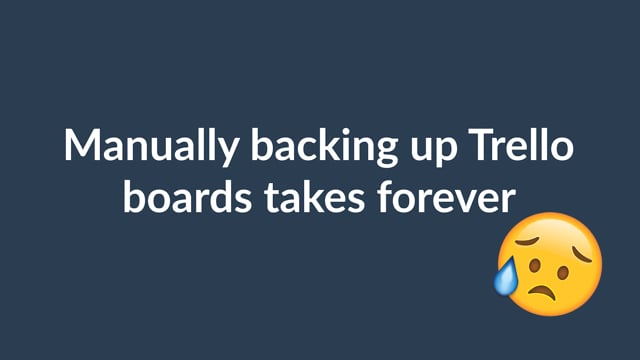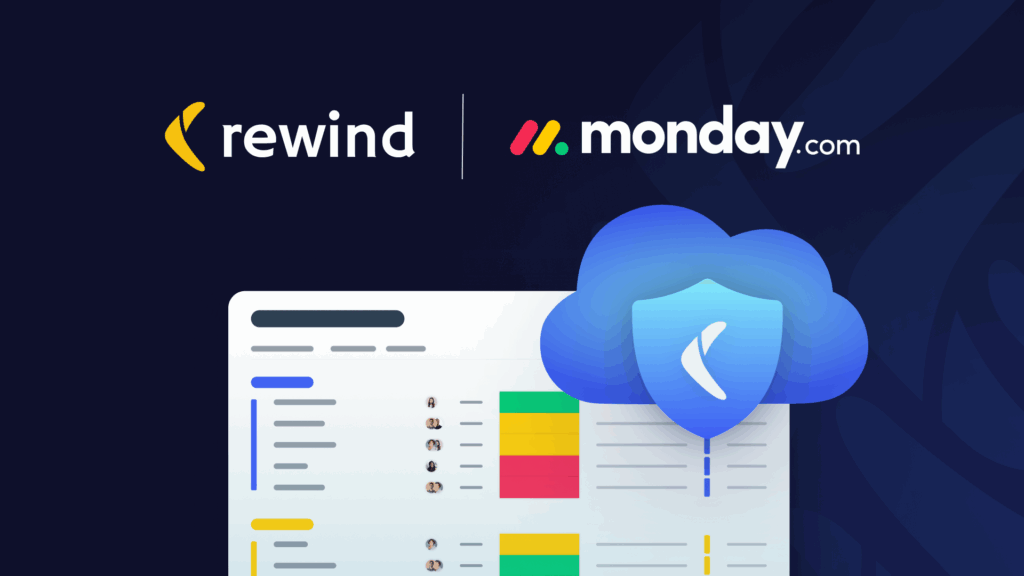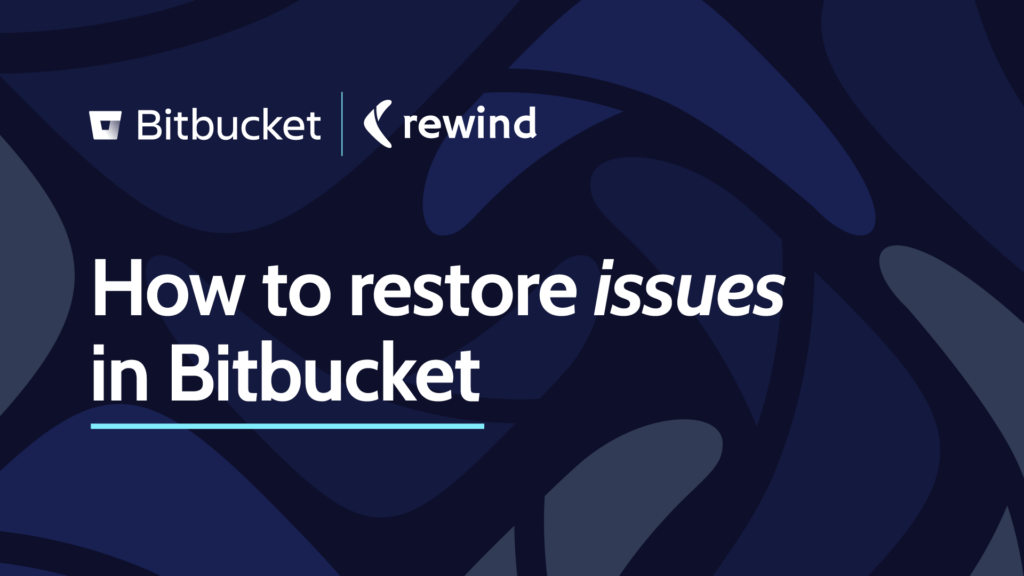So you’re ready to join the ranks of Unito, Crmble, and hundreds of other essential Power-Ups creating apps that add extra functionality to Trello? Nice thinking!
Here at Rewind, we know a thing or two about launching apps. In April 2021, our Backups for Trello app blasted off to the marketplace. We took some notes and picked up some good tips along the way. Read on to learn how to take your shiny new solution to the Trello marketplace and get your first users!
First Things First
Hopefully you found this article by googling “How to take your Trello Power Up to market” or something similar. There are so many helpful tips and tricks on launching new products or apps to the market. Here are some articles we found helpful when preparing to plan for a launch:
- Power-Up Launch Playbook by Trello
- The Proven Process for Developing a Go-to-Market Strategy
- Product Marketing Alliance’s Go-To-Market Guide
Launching a Power-Up is a team effort, requiring everyone to be running in the same direction. With multiple teams and stakeholders involved, a good project management strategy is essential to success. If you’re looking to brush up on your skills, – we rounded up some of the best project managers in the game, and asked for their best advice.
Build in Public
We’re big fans of building solutions in public. “Building in public” is a relatively new term in the SaaS community, and it’s exactly what it sounds like: creating solutions and products in a highly visible way, with the input of many different stakeholders. Many are afraid their idea will be stolen if they talk about it before launch. But, we believe the advantages of building in public outweigh the risks. Plus, anyone can copy your solution after you’re live, so you might as well build an excited community leading up to launch.
Get vocal about what you’re building and create a narrative that an audience can follow and get behind. By offering sneak peeks, you can capture the attention of early adopters, build trust, get feedback, establish yourself as a domain expert, and inspire loyalty through authenticity. Harness the power of your audience wherever they may live, whether that’s social media, your blog, or aggregating sites like Product Hunt.
Know Your Audience
Trello has a reported customer base of 64 million users! It would be pretty impossible to build a Power-Up that’s exciting to 60 million plus people. It’s your job to figure out which of those users are your target audience and where to find them. The best way to get to the bottom of your target market is through research and interviews.
Get to the bottom of their pain and how your new app solves that problem for them and ultimately makes their life a little easier. Take your time to nail your messaging but be prepared to evolve it. You might uncover some solid value propositions while testing your app that can help you craft the perfect narrative behind your messaging.
Map out your buyers. Who are they? Where do they find the latest and greatest? What types of content do they consume? What about Trello makes them pull their hair and what about Trello could they never live without? Learn about the nitty gritty; it’s where all the best insights come from. Turn these facts into your buyer personas and use these to help you map out your marketing strategies for launch.
Once you know who you are selling to and you’ve crafted the perfect message, it’s time to dive into the competitive landscape.
Scope Out Your Competition
No matter what solution you’re taking to market, knowing your competition will help you make informed decisions regarding your marketing strategy. To get started, check out the Power-Ups in the Trello marketplace. Are any solutions similar to yours? What’s their pricing structure? How do they talk about their features? What kind of customers are they targeting?
It could very well be that your solution is the first of its kind on the Trello marketplace. In this case, you will want to identify how users are currently solving the pain your problem resolves.
In our case, we learned that Trello users were manually taking screenshots of their boards to preserve them because there was no backup solution for Trello. Understanding users’ workarounds can help craft your messaging by positioning your solution against less efficient workarounds. You can check out the Atlassian community forum and search for what customers are saying about the problem you’re solving. Pro tip: Reverse-engineer these quotes to develop your messaging.
For example: When we were preparing to launch Backups for Trello, we found a customer who had written: “I am worried about something happening and losing all my information in Trello.”
We later developed ad messaging that read, “Stop worrying about data loss in Trello. Protect your mission-critical data with Backups for Trello”. There is no better way to write ad copy than using real quotes from users you’re targeting.
Establish Partnerships
When you’re diving into a new market, it’s important to build relationships with those who share any insights or can help amplify your voice. Check the Power-Up marketplace for potential partnership opportunities. Are there any Power-ups that complement your solution or amplify your marketing efforts?
In addition, you can reach out to influencers who have already built credibility with your target audience. For example, if you’ve built a CRM for Trello, like our friends at Crmble have, it might make sense to form partnerships with notable sales professionals to promote your solution.
Having the support of the right trusted advisor can be extremely beneficial when it comes to marketing a solution.
Create a Plan
You might already be aware of the 3 stages of the buyer journey: awareness, consideration, and decision. When building your go-to-market plan, it’s important to consider how you’ll aim to reach prospective customers during each stage. You’ll want to consider everything from SEO to digital in your go-to-market strategy.
SEO
With an SEO analysis tool like Ahrefs you can explore keywords, phrases, or questions related to your solution. Publishing quality content related to your solution will help reach an audience that’s in the market for your solution. Making insightful blog posts available to users at no cost will help establish you as a thought leader and trustworthy source in your domain.
Don’t expect your blog posts to appear on Google immediately after posting – SEO marketing is a long term play. Well written, quality posts will organically gain momentum and make their way up the search engine ladder over time. Focus on creating quality content that solves a user’s problem or answers a question – not on content that simply lights up SEO algorithms. Remember, you’re writing for people, not Google (and Google typically rewards content that people spend a lot of time on).
Social
Hopefully, your user research was able to shed light on where your target audience hangs out online. Use this to build your social media strategy. Give your target audience a way to discover you – and a reason to follow you – on social media by sharing valuable information, using relevant hashtags, and engaging with thought leaders your audience is already following.
Digital Ads
A digital advertising strategy for your product will be vital to generate demand for your solution. Lean on the personas you developed earlier and test the messaging you built using the value matrix. Digital ads are a great way to build awareness.
Keep testing advertising channels, creative, and messaging until you’re happy with the results you see. Digital ads should always be evolving and should frequently be refreshed to avoid ad fatigue. Optimizing your ads should decrease your cost per acquisition. Over time, you should understand which channels make sense for your business and stop investing in those with poor conversion.
Experiment
Trello is widely adopted across many industries. As a result, you never know where you’ll find prospective customers for your solution. Testing new channels will help your team find the right – and wrong – places to attract your users quickly. At Rewind, we tested Product Hunt to build awareness about our solution a few months post-launch.
Build Your Content
When we think about content, we typically think about blog posts and other customer-facing collateral. However, it’s just important to build content for internal use. If your team isn’t aligned when talking about your solution, you’re not setting yourself up for go-to-market success.
Awareness Stage
Users in the awareness stage have yet to learn about your solution. Using what you learned during the SEO analysis stage, build out some entry-level blog posts to attract your ideal customers.
Consideration Stage
Users in the consideration stage will want a commitment-free way to see what your solution looks like and how it works. Giving prospective buyers a taste of your offering before they sign up is a great way to match expectations to reality. Host an educational webinar to show off your solution and connect with prospective customers.
Pro tip: Offer webinar attendees a unique promo code as a token of appreciation for attending your event. Not only with this help identify which customers you were able to convert with a webinar, you will build a reciprocal relationship with your customers. Follow-up with webinar registrants with a shareable 1-page PDF explaining your solution. As a rule of thumb, it’s great to have a sales slide deck and/or a 1-pager prepared for launch for Trello users who may be interested in more information about your Power-Up.
Evaluation Stage
For those in the evaluation stage, you’ll want to prepare a competitor battle card and prepare some talk tracks to handle objections for internal use. Why is your solution better than its competitors? What does your solution uniquely provide to the user? Your team should all be able to answer questions like this in their sleep. This will equip your team to sell your solution with confidence.
Post-Purchase Stage
If you have a website, don’t forget to create a Help Center. Provide your customers with a place they can turn to if they need quick answers to common questions. Not only does this enhance the user experience, it lessens the burden on your support team.
Power-Up Page
The Power-Up marketplace will likely be one of your main drivers of installs. It’s important that your Power-Up page is search engine optimized, includes your key messaging, and summarizes the main benefits of your solution. You may opt to include some screenshots or GIFs of your Power-Up in action to give potential buyers a taste of what they can expect after installing. You can check out the Backups for Trello Power-Up page we created for inspiration.
Launch with a Bang
Leading up to launch, you’ll want to create some collateral to generate some buzz about your product. At Rewind, we shared this video across our social media channels to let the Trello community know that something exciting is launching soon. This campaign warmed people up to our solution and stirred up some excitement.
You should also prepare some social media content for the day of your launch – whether it’s static graphics or video content, keep it fresh and exciting and don’t forget to tag @Trello. You never know, maybe they’ll share your posts!
This was the video we launched on Backups for Trello launch day:

On launch day, you’ll want to set the following assets live:
- Any Help Center articles so users can navigate your product with ease
- Any social media announcement posts so users know that your solution is available.
- An announcement email going out to users who expressed interest during your development phase.
- A blog post introducing your solution so users can read about the journey to launch. For inspiration, see our “Introducing Backups for Trello” blog post.
Learn and Iterate
You’ve finally launched your Power-Up in the marketplace – congratulations! It may seem like the work is over but in reality, the fun has just begun! As users start to trickle in and use your product, we recommend reaching out to them to learn more about them and how they’re using – or plan to use – your solution. This will help understand whether your solution is properly positioned, whether you’re attracting the right audience, and if your marketing efforts are working.
Use these customer conversations to iterate. Don’t be afraid to tweak the language on your Power-Up page, in your emails to customers, or in your ads. Leading up to launch, you’re operating on assumptions. As your solution evolves, so should your messaging. The secret sauce to good marketing: always be enhancing. What worked yesterday won’t work tomorrow; good marketers know to never coast on previous success.
If you’re bringing a unique solution to Trello we want to hear from you. Reach out to dasha@rewind.com to introduce yourself. We’re always looking for new Power-Ups to partner and collaborate with.




